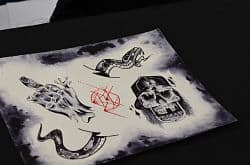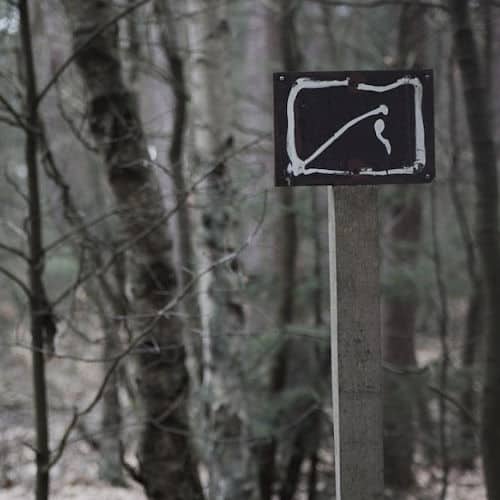The coming academic year is beginning to take shape and it looks very promising. Discussing gender in Europe, devising creative and innovative approaches in education, or exploring the semiotics of tattoos, here are just a few events to get things started.
As always, if you want your event to feature in our next events list or if you wish to write a short report, don’t hesitate to get in touch with our events assistant Aude at audef@allegralaboratory.net.

Academic year 2017/18, New York University, New York
The GENDER and TRANSFORMATION: WOMEN in EUROPE Workshop—a project at New York University with support from the Network of East-West Women—invites speakers to submit proposals for Friday afternoon talks for the next academic year at the NYU Center for European and Mediterranean Studies.
As is our usual practice, we are looking for speakers to discuss gender, sexuality, or women in Europe or Eurasia. For the academic year 2017-2018, we are particularly (but not only) interested in speakers addressing resistance to the many threats to gender equality and gender studies in Europe that have come as part of the rise of illiberal populism, nationalism, or the global right. This can include resistance to “anti-genderism,” to attempts to roll back gender equality policy and practice (such as on reproductive rights and gender violence), to attacks on gender studies, and to gendered attacks on refugees and asylum seekers.
The workshop’s focus is on the postcommunist countries of East, South and Central Europe and the former Soviet Union, including the Baltic countries and Central Asia, and their relationship to Europe and the European Union. Recent workshops have included such topics as critique of law faculties in Eastern Europe, women’s protests in Poland against banning abortion completely, and anti-genderism in Germany, Moldova, Armenia, and Russia. Recent speakers have included Dubravka Ugrešić and Katherine Verdery.
The workshop is an informal and friendly group of about 20 feminist scholars, activists, and journalists who have been meeting for more than two decades and are knowledgeable about the region. This is the perfect space to present recent theoretical and/or critical work, empirical research, and critical and scholarly reflections on your activism. [more]
Deadline for submission of abstracts: 10 July 2017

1-2 December 2017, Palermo, Italy
The contemporary practice of tattooing is globally diffuse. From being a marginal anti-language, writing on the body has revealed itself as a globalized trend. While tattooing initially may have been a niche occurrence, being rather a minority practice, today its popularity confirms its normalization, hardly a trivialization: in 2015, about 30% of people in the United States, and 13% (which means more than seven millions) in Italy are tattooed. As for all the massive trends, not performing any tattoo begins to be an effective tendency as well, and is thereby facilitating its objectification.
Several Humanities have been dealing with this phenomenon, especially Criminal and Cultural Anthropology in their constitutive weavings with Sociology, Folklore Studies, Image Theory, Literary History and Cultural Studies, and – not least – Semiotics, that is Sense and Sign theory.
The issue of individual and collective identities, which involve the processes of building, transforming and denigrating the sign, flooding from somatic into social (and vice versa), however, only partially coincide with that related to the writing of the body. The practice of tattooing produces traditions – even invented – and translations beyond the strictly ethnic dimension, involving, today more than ever, the aesthetic dimension, i.e. sensory and somatic, but also visual, vestimentary, ultra-vestimentary and artistic factors.
The semiotic outlook, redoubling the plans of the problem (expression / content), allows not only to interpret its many anthropological paths but also the places where, while blocking, these same paths tend to institutionalize or, alternatively, dissolve, proposing original and ‘creative’ solutions. On the one hand, the body, stuck among suffered pains and sought aches, tends to become other-than-self, metaphorizing itself (What analogies do consequently exist between tattoo and street art, between tattooing and marking, between tattoo and branding or anti-branding?). [more]
Deadline for submission of proposals: 30 September 2017

23-24 November 2017, Australian National University, Canberra, Australia
In glossy Islamist publications and in the blogs of opposition activists, we seem to have unprecedented empirical access to voices from the Middle East and Central Asia. We are bombarded with images from and about the Muslim world. The Syrian conflict alone has produced a stream of videos, testimonies, counter-testimonies and raw propaganda. The revolution has been live streamed, skyped, tweeted and mapped in real-time. This is a function of both technology and of new forms of media and material. Social media, most notably, has become something of a danger and a boon to analysts and policy makers. Its epistemological promise matches its purported role in disrupting and transforming social and political life on the ground. Words, symbols and media proliferate. The remains of destroyed historical artefacts, the filming of that destruction, and the propagation of such film on social media: each are potential data sets for the scholarly endeavour.
Yet it was almost thirty years ago that Timothy Mitchell argued the European enterprise of knowledge about colonial Egypt actually constituted an idea of Egypt as a picture. Western knowledge of the Orient relied on the idea that the other could be drawn, re-presented, re-figured, re-ordered. Echoing Heidegger’s epithet, this was ‘the age of the world exhibition, or rather, the age of the world-as-exhibition’. Arguably this picturing of the Other has not slowed down: the Muslim is described, explained, illustrated in cartoon and prose, delineated in laws and regulations, and filmed in real-time as he crosses the sea. Yet we picture them differently depending on disciplinary background: as construction, as epiphenomenon, as agent, as function of history. So images, symbols, and all manner of representations are more dominant than ever. The Muslim is an image, an idea, an other.
We suggest that words, symbols, images and other representations therefore warrant a dedicated empirical and theoretical investigation beginning from the best of the inter-disciplinary traditions of Middle Eastern and Islamic studies, but welcoming participation from surrounding academic practitioners. We are interested in both the epistemological potential of these symbolic tokens, as well as various theoretical challenges that are raised by them, concerning the Middle East, North Africa and Central Asia. [more]
Deadline for submission of abstracts: 24 July 2017

18-20 October 2017, Prishtine, Kosovo
The main aim of the conference to bring out creative and innovative ideas in the areas of education, science and arts. The conference is open to all issues that can be associated with the concept of creativity and innovation and is open to multidisciplinary and interdisciplinary studies. This framework will include high-quality theoretical and practical papers. [more]
Deadline for submission of film proposals: 8 September 2017

16-20 May 2018, Universidad de Oriente, Santiago de Cuba, Cuba
Drawing on the polyphonic character of contrapunteo, understood as the interweaving of two or more independent melodies working together to form a rich harmonic texture, we invite participants to reflect on Anthropology’s plural configurations and engagements. There are many types of counterpoints, all expressing forms of polyphonic interdependence in the rhythms and contours of a piece of music. The melodies entangled remain independent, but their combination creates new composites that are continually emergent and transforming. A “contrapuntal anthropology” (Ong 1996:84) encourages the multiplicity of voices, the postcolonial deconstruction of knowledge, and the polyphony of social and cultural life. Counterpoints allow for the exploration of assemblages, relationalities and entanglements (Ingold 2011). The intertwining of elements in counterpoint is not always harmonious: the more antagonistic sense of counterpoint suggests something that is placed against something else. Contrapunteo offers new channels to hear voices of contestation, acknowledge the traces left by colonialism, and recognize what is being articulated in reply, such as resurgent struggles of resistance and healing. To “think contrapuntally” (e.g. Howes 1996; Catauro since 1999) can hold voices in tension or conflict, and can generate choruses of call-and-response. CASCA-CUBA wishes to address how contrapunteo can offer new avenues to understand relationships, knowledge, history and power. Has the discipline of Anthropology nurtured particular counterpoints and if so, what are their trajectories? [more]
Deadline for submission of abstracts: 17 November 2017

21-23 September 2017, Queen’s University Belfast, Northern Ireland
The arts and the liberal arts have always had an eye on the future. From classical works of dystopic fiction to surrealist artistic visions, imaginings and simulations of the world’s future has always been central to humanities hopes and fears. Works of fiction can be considered a way of dealing with an uncertain future, offering opportunities for the creator and observer to explore the unknown.
In the creative and liberal traditions, time, intellectual endeavour and resources have been exhaustively spent dealing with the future. Be that in countless anthropological reflections on cultural transformations, or what the future holds for enclaves of cultural traditions in the Anthropocene, or to revolutionary world simulation in digital mediums, the future has always been a central motivational cog in a spinning wheel.
This conference will give presenters the opportunity to look back on classical fiction and non-fiction predictive texts and reflect on the accuracy of prediction. This classical beginning raises the question – in imagining the future – do we set a course for that future? As liberal and creative arts are often responsible for imagining the future, then are we responsible for that future? As anthropologists, if we use our skills as ethnographers to understand the needs of the future for the development of goods and services, through long-term engagement with participants – where does our responsibility begin and end? If those in the liberal arts and creative arts have their finger on the pulse of cultural trends what is our part in that future? [more]
Deadline for submission of abstracts: 23 July 2017
Featured image by cea + (flickr, CC BY 2.0)


